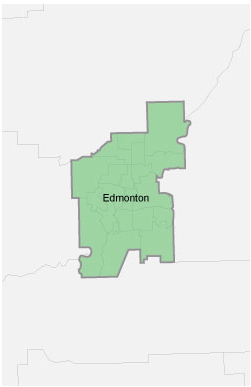Take the first step towards going green and reducing your energy consumption by conducting a home energy audit! An audit can help you determine how much energy your home uses, where it's losing energy and how to prevent it.
While professional audits provide a more thorough assessment, you can conduct your own quick and easy walk-through to spot areas around your home that could improve.
1. Look for indoor air leaks
Don't waste energy heating and cooling air inside your home to have it leak outside. Inspect your baseboards, window frames, and doorframes for any gaps or large cracks where air can escape. During winter months, these are areas where you'll feel a draft. You can fix these by installing weatherstripping or caulking to fill the gaps.
Other inconspicuous air leak areas include electrical outlets, wall or ceiling-mounted light fixtures and open fireplace dampers. These areas can be safely repaired by maintenance professionals.
2. Inspect heating and cooling equipment
Did you know that heating accounts for roughly 62% of your home energy use? Ensuring that your heating and cooling equipment is efficient is key to keeping your consumption down.
Start by checking your air conditioner and furnace filters, replacing them if they look worn or dirty. Filters should be swapped out once every month or two to keep the equipment operating at its best. Next, inspect the equipment's ductwork for streaks of dirt, especially near seams, as these can indicate air leaks that need to be sealed. Have a professional clean your equipment once a year and perform repairs if they arise.
If your air conditioner and furnace are more than 15 years old it could be time to replace them with more efficient ENERGY STAR-certified models.
3. Check your lightbulbs
While remembering to switch off the lights before leaving the house helps to reduce home energy consumption, using energy-efficient lightbulbs will have a much larger impact over time.
Examine the bulbs around your house to see if they're halogen or compact fluorescent lamps (CFLs). These bulbs are much less efficient than light-emitting diodes (LEDs). ENERGY STAR-qualified LEDs use 20-30% of the energy and last approximately 25 times longer than halogen bulbs and CFLs.
4. Find and slay "energy vampires"
While idle electronics and appliances waste less energy than air leaks or an inefficient furnace, eliminating them is an easy way to save energy. Standby power uses electricity even when an electronic is in the off position.
Take inventory of the electronics and appliances around your home. If you don't frequently use an item, consider keeping it unplugged or plugged into a power strip with other occasional electronics that can easily be turned on or off. The usual suspects include gaming consoles, AV receivers, laptop charger cables, printers and coffee makers.
5. Check Insulation Levels
Heat loss can occur through your walls, floors or your ceiling. Your attic is easiest to check that your insulation levels meet current recommended minimums. Also, look to ensure any openings for pipes, ducts, and chimneys are sealed. If you detect any issues, an expanding foam caulk can be used to seal the gaps. This is also a good time to ensure that the appropriate vapour barrier is in place and exterior attic vents are not blocked by insulation.
Sources: City of Edmonton, US Department of Energy











